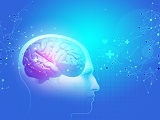Do-It-Yourself Transcranial Direct Current Stimulation (DIY tDCS): Is It Safe?
 Date: June 2017
Date: June 2017
Authors: Jau-Shin Lou, MD, PhD, MBA; Robert Chen, MA, MBBChir, MSc, FRCPC; Velijko Dubljevic, PhD, DPhil
Editors: Michael S. Okun, MD, and Stella M. Papa, MD
Prof. Jau-Shin Lou, MD, PhD, MBA
The scientific literature has shown that tDCS improves memory, math skills, and academic performance in normal subjects and may be beneficial for patients with depression, Alzheimer’s disease and stroke. Because tDCS is non-invasive, simple and low cost, it has gained significant media attention and public interest. In fact, the DIY tDCS online community has flourished enlisting thousands of subscribers (see http://www.reddit.com/r/tdcs). Although tDCS has been shown to be safe in laboratory settings, its safety in a layman’s hands has not been examined. In this blog, we ask Drs. Robert Chen and Veljko Dubljevic to share with us their opinions on this issue.
“The public needs to know more about the potential risks of brain stimulation. The use of tDCS outside research studies is currently not recommended.”
Prof. Robert Chen, MA, MBBChir, MSc, FRCPC
Transcranial direct current stimulation (tDCS) is a non-invasive brain stimulation method that applies low intensity electrical current to the scalp using surface electrodes. The proposed mechanism of action is that it biases membrane potentials to increase or decrease neuronal excitability. Variations of the technique include transcranial alternating current and random noise stimulation. Many studies have investigated tDCS as a potential treatment for neurological and psychiatric disorders. However, the therapeutic use of tDCS has not been proven, and currently there is no approved therapeutic indication for tDCS. The main reported side effects of tDCS are skin irritation and burning, headaches and fatigue. Mania and hypomania has been reported in patients with depression although a cause and effect has not been demonstrated.
tDCS is also being promoted for non-medical use such as to enhance memory and improve performance in video games and sports. The equipment can be purchased “over the counter”, primarily through the internet. There are also websites and blogs that describe ways to construct and use tDCS devices with an active “do it yourself” community. Non-therapeutic devices often face less stringent regulatory environment than therapeutic devices. The regulatory environment of tDCS devices is complex and differs across different jurisdictions.
The non-medical use of tDCS raises considerable ethical, legal and safety concerns.1
Firstly, the results of tDCS are highly variable among individuals. The effects are influenced by a large number of parameters that have not been adequately studied and are often difficult to control. These include stimulation parameters (e.g. polarity, current, duration, stimulation pattern), size of the current, precise location of the electrodes, skin resistance, individual anatomical variations, and cognitive, motor and behavioral states of the subject.
Secondly, we have little information on the long-term effects of repeated stimulation sessions. Improvement in one cognitive area can be associated with impairment in other areas. People with neurological or psychiatric disorders, and those with metallic intracranial implants or skull defects, may be particularly susceptible to potential side effects. There is little safety data on the effects of tDCS in children in general and with developmental brain disorders. Some of these concerns were outlined in a report from the Institute of Medicine,2 an open letter to do-it-yourself users of tDCS.3
In conclusion, much more work needs to be done to understand the underlying mechanisms of action and neurophysiological effects of tDCS, particularly the long-term effects. The public needs to know more about the potential risks of brain stimulation. The use of tDCS outside of research studies is currently not recommended.
"tDCS needs to be regulated.”
Dr. Veljko Dubljevic, PhD, DPhil
As I have argued elsewhere at greater length, the safety and efficacy of tDCS have only been demonstrated in controlled laboratory settings and, without supervision, the use of tDCS might cause serious adverse effects such as temporary respiratory paralysis. The promotion to use tDCS by laypersons might be connected to one-sided information provided by the media. Usually, media headlines are enthusiastic and describe tDCS as an ‘‘amazing new technique’’ only highlighting the potential benefits.
As for how tDCS can be regulated, this is not an easy question. Indeed, as I have argued comprehensively in a published article, tDCS as a do-it-yourself gadget could potentially defy almost all efforts to regulate the technology. However, having a reasonable legal alternative is enough in most cases to promote regulated use of safe products. A reasonable approach would be considering licensing and certification procedures for the use of tDCS as a product or a service. Safety and proper use training of tDCS users are crucial issues, which should guide our public discussion and policy.
Conclusions
Both of the experts agree that use of tCDS outside of research studies raises serious concerns and that regulatory monitoring will be something that needs to be addressed in the near-term.
References
1. Wexler A. The practices of do-it-yourself brain stimulation: implications for ethical considerations and regulatory proposals. J Med Ethics 2016;42:211-215.
2. Bain L, Possy Norris S, Stroud C, eds. Non-invasive modulation of the central nervous system: opportunities and challenges: workshop summary. Washington DC: National Academies Press, 2015.
3. Wurzman R, Hamilton RH, Pascual-Leone A, Fox MD. An open letter concerning do-it-yourself users of transcranial direct current stimulation. Ann Neurol 2016;80:1-4.
4. Dubljević, V., Saigle, V., and Racine E. (2014): The Rising Tide of Transcranial Direct Current Stimulation (tDCS) in the Media and Academic Literature, Neuron, 82: 731-736.
5. Dubljević, V. (2015): Neurostimulation devices for cognitive enhancement: Toward a comprehensive regulatory framework, Neuroethics, 8 (2): 115-126.







Submit Your Comment